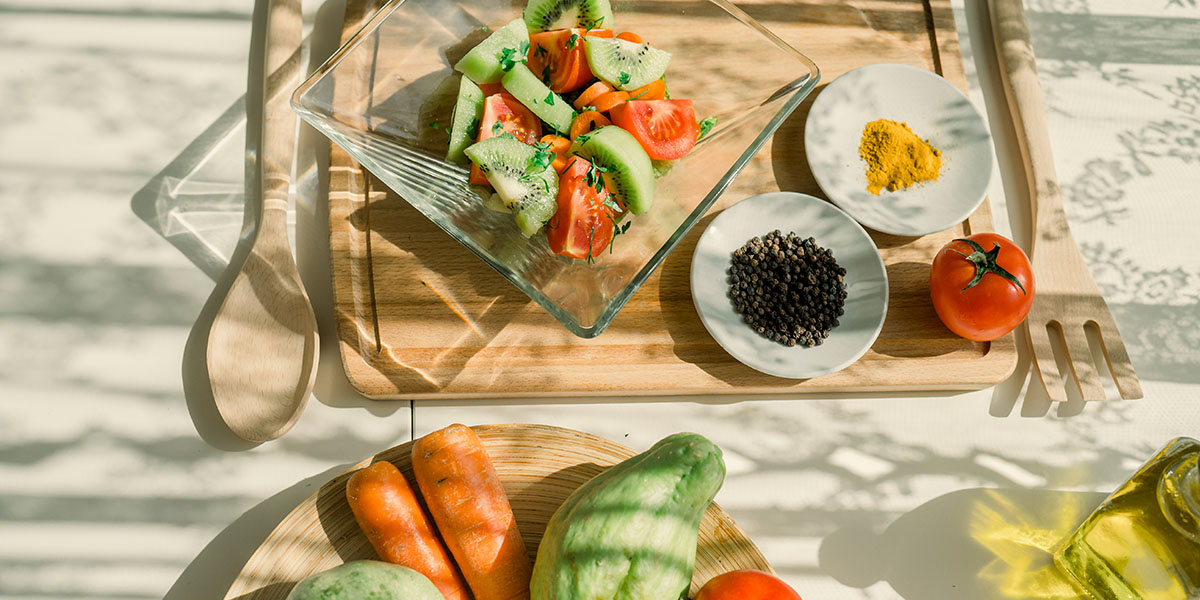Vowing to eat better this year? Some of the most common nutrition resolutions aren’t easy to keep. Here are 3 to skip, and how to replace them.
The benefits of adding more plant-based foods in your day
Canada’s food guide recommends choosing protein foods that come from plants more often. Learn about the benefits and get tips for adding more plant-based foods into your diet.

As the world faces climate, health, and economic challenges, there’s a growing focus on sustainable food consumption and production. An increasing number of consumers are turning to plant-based options as a way to curb these concerns. In fact, a 2021 study found that over 40% of participants feel positively towards plant-based proteins and plant-based meat alternatives. Another study reveals that 33% of Canadians are already vegetarian or actively eating less meat.
The truth is that adding more plant-based foods to your diet can have positive benefits for your health, your wallet and the environment. Here is everything you need to know about increasing your plant-based food intake.
What’s the deal with plant-based foods?
Eating a variety of nourishing foods is the foundation for healthy eating and disease prevention. Health Canada even changed its Food Guide to reflect this. An image of a plate replaces the rainbow of food servings. This helps people visualize what it looks like to eat nutritious, balanced meals. Foods have been re-categorized as vegetables & fruits, whole grain carbohydrates, and protein foods.
The food guide also includes a lot more plant-based options. What does this mean? Foods that come from plants are more prominently featured than foods that come from animals. Eating more plant-based foods simply means adding more variety with:
- vegetables
- fruits
- wholegrains
- plant-based proteins
The latter is supported by 82% of Canadian dietitians.
Let’s be clear, adding more plant-based foods to your diet doesn’t mean you have to become vegan or vegetarian. That is unless you want to. But including more plant-based options can be a more sustainable way of eating in the long run.
Benefits of adding plant-based foods to your diet
Health
Incorporating more plant-based foods increases the amount of fibre and unsaturated fats – or healthy fats – in your diet. It also reduces the amount of saturated fats – unhealthy fats – and refined carbohydrates.
These changes, along with other lifestyle choices like physical activity, stress management and good sleep are essential to help:
- Lower blood pressure.
- Improve cholesterol levels.
- Manage blood sugar levels.
- Regulate bowel movements.
- Better your mood.
All these improvements can reduce the risk of:
- heart disease
- stroke
- diabetes
- some types of cancer
It also supports better mental health.
It’s important to be mindful about processed packaged foods that claim to be healthy or plant-based. This includes plant-based chips, cookies and burgers. All foods, even processed and packaged foods, can be enjoyed in moderation. However, keep in mind that processed foods can contain more sodium, sugar, and other additives. For sustainable eating, make sure to enjoy your favourite foods while prioritizing whole foods that you prepare yourself.
Financial
With rising food prices in Canada, we need to learn how to nourish our bodies in a way that is affordable and sustainable for each of us. In general, plant-based foods cost less than animal-based foods. Meat and dairy products will likely cost more than a block of tofu or a bag of lentils. You can save on your grocery bill just by making some simple plant-based swaps when planning your meals for the week.
Take a look at the cost associated with a few common sources of protein:
- 1 kg ground beef: $12.46
- 1 kg chicken breasts: $14.06
- 4L whole milk: $6.10
- 1 dozen eggs: $3.84
- 1 kg red lentils, kidney beans or chickpeas: $3.74
- 1 kg firm tofu: $5.94
The cost of vegetables and fruits is also rising. Maximize your grocery budget by:
- Looking out for store specials and coupons.
- Buying produce that is in season and local.
- Opting for frozen and canned options.
Environmental
Foods from plants have a much lower impact on the environment. They generally use less energy, land and water and have lower greenhouse gas emissions.
Other contributors to the environmental impact of food, specifically greenhouse gas emissions, are:
- Food waste.
- Food processing.
- Food packaging and transport.
When shopping, try to find products that are:
- Grown locally.
- Unprocessed or minimally processed.
- Without packaging or with reusable/recyclable packaging.
Sustainable steps for plant-based eating
Changing your diet and including more plant-based options can lead to food waste if you don’t have a plan for how to prepare and eat those foods. Here are some practical tips to help incorporate new foods sustainably into your lifestyle and plan more plant-based meals:
- Wash, chop and refrigerate or freeze extra vegetables when preparing meals, so you’re ready for meals the next day.
- Cut up some fruit and add it to your breakfast cereal, salads, and baked goods.
- Reduce waste by eating vegetables that spoil faster (like leafy greens) first. Then eat the more robust ones (like broccoli or cauliflower) later in the week.
- Be cautious of ultra-processed foods and food marketing. A good rule of thumb is to find foods with less packaging and with fewer ingredients.
- Experiment with “meatless Mondays” or plan to have one to two plant-based meals a week.
- Browse for recipes that are interesting to you, or ask family and friends for suggestions
- Try a plant-based meal at a local restaurant to get inspired in your own kitchen.
Remember, it doesn’t have to be expensive, inconvenient, or complicated to benefit from eating more plant-based. Here are some easy-to-use plant-based foods you can add to your next grocery list:
- Whole grains. Quinoa, oats, brown or wild rice, bulgur, barley, whole-grain bread and pasta.
- Fresh, frozen or canned fruits and vegetables. Apples, oranges, pears, peaches, berries, carrots, leafy greens, beets, tomatoes, broccoli, cucumbers and peppers .
- Plant proteins. Chickpeas, lentils, kidney beans, tofu, nuts, and seeds.
Looking to learn about how to eat more plant-based foods?



